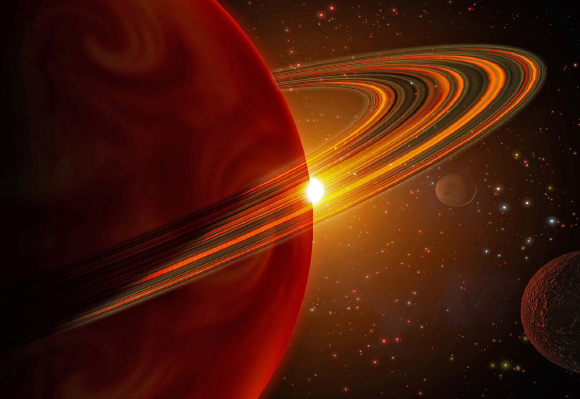A close encounter with Jupiter approximately 4 billion years ago may have resulted in another giant planet’s ejection from the Solar System, according to a team of scientists in Canada.
The existence of a fifth giant planet at the time of the Solar System’s formation – in addition to Jupiter, Saturn, Uranus and Neptune – was first proposed in 2011.
But if it did exist, how did it get pushed out? For years, astronomers have suspected the ouster was either Jupiter or Saturn.
“Our evidence points to Jupiter,” said team member Ryan Cloutier, of the University of Toronto.
Planet ejections occur as a result of a close encounter in which one of the planets accelerates so much that it breaks free from the massive gravitational pull of their host star.
However, earlier studies which proposed that gas giants could possibly eject one another did not consider the effect such violent encounters would have on minor bodies, such as the known moons of the giant planets, and their orbits.
So the Canadian astronomers turned their attention to moons and orbits, developing computer simulations based on the modern-day trajectories of Callisto and Iapetus, the regular moons orbiting around Jupiter and Saturn respectively.
The team then measured the likelihood of each one producing its current orbit in the event that its host planet was responsible for ejecting the hypothetical ice giant planet, an incident which would have caused significant disturbance to each moon’s original orbit.
“Quantitatively, we compute the likelihood of reconciling a regular Jovian satellite orbit with the current orbit of Callisto following an ice giant ejection by Jupiter of 42 percent and conclude that such a large likelihood supports the hypothesis of a fifth giant planet’s existence,” Cloutier and co-authors wrote in their paper in the Astrophysical Journal (arXiv.org preprint).
“A similar calculation for Iapetus reveals that it is much more difficult for Saturn to have ejected an ice giant and reconcile a Kronian satellite orbit with that of Iapetus (likelihood around 1 percent), although uncertainties regarding the formation of Iapetus, on its unusual orbit, complicates the interpretation of this result.”
_____
Ryan Cloutier et al. 2015. Could Jupiter or Saturn Have Ejected a Fifth Giant Planet? ApJ 813, 8; doi: 10.1088/0004-637X/813/1/8








